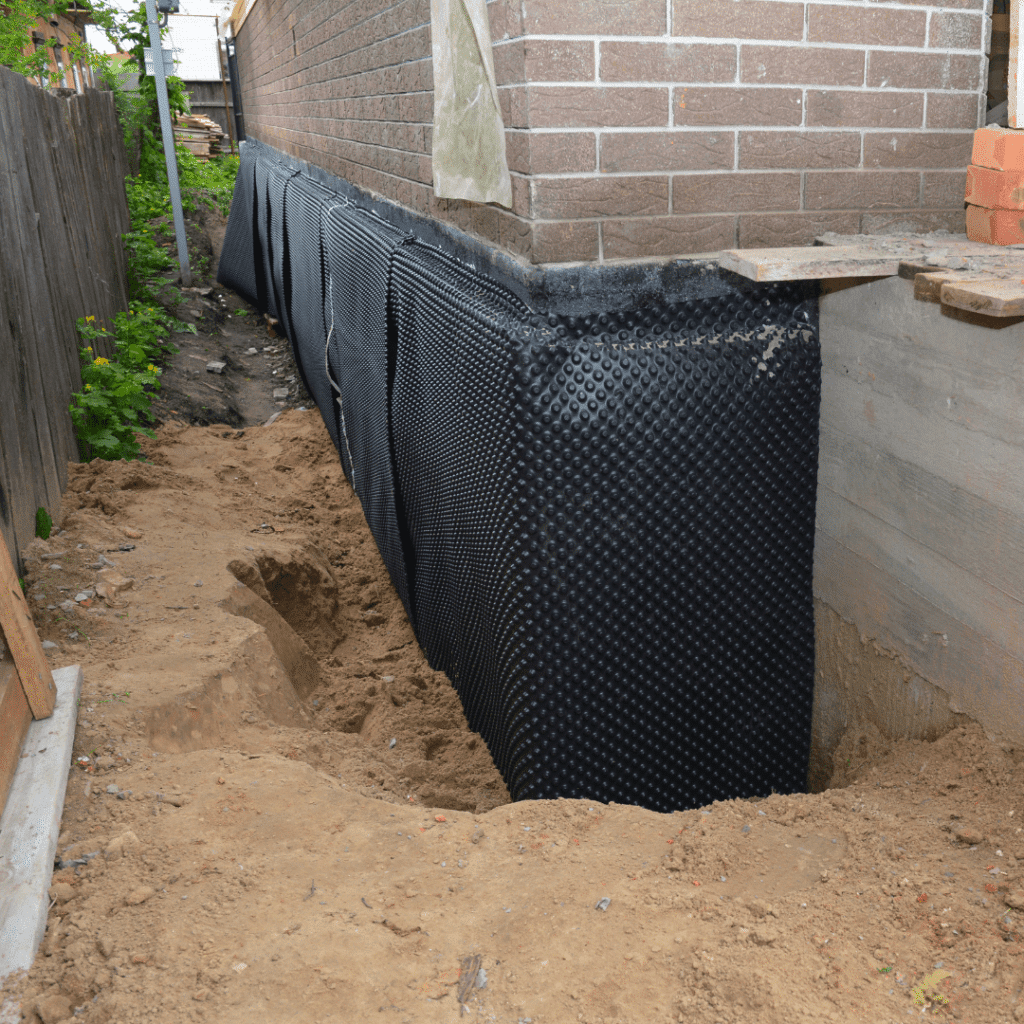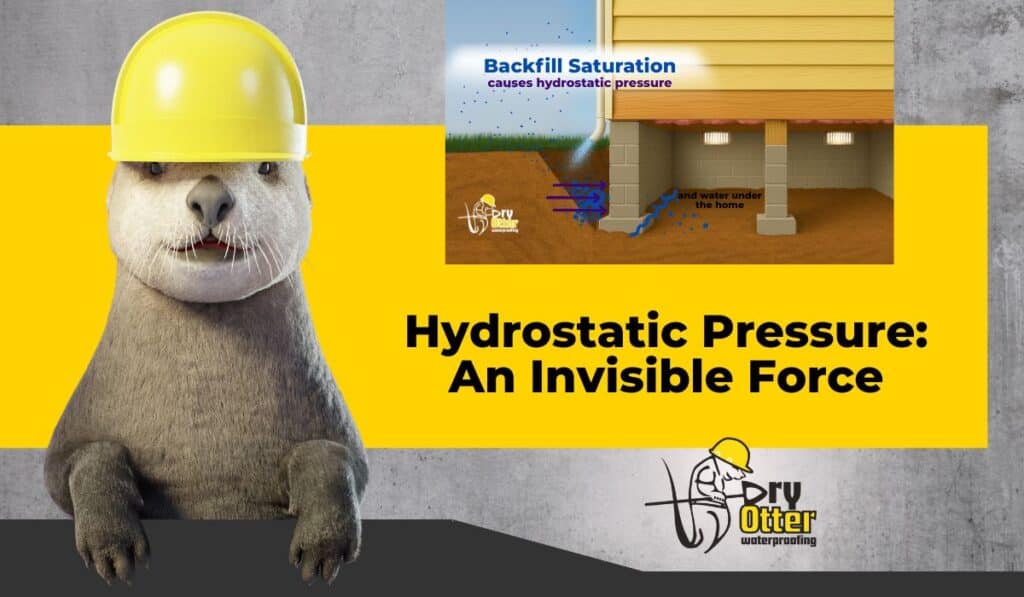It’s a no-brainer that it’s important to keep your basement dry. Your basement usually houses essential appliances that keep your household running smoothly, like your water heater, washer and dryer, furnace, and ductwork. It’s also an ideal location for storage. But many homeowners think it’s just a given that a basement has to be wet, but indeed it doesn’t have to be that way! Here, we’ll discuss the very basics about basement waterproofing DIY, and give some insight as to whether you should go the do-it-yourself route, or hire a professional.
Understanding the Basics of Basement Waterproofing
Basement waterproofing can be represented with a few different dichotomies. There’s inside or exterior, it can be done during construction or retrofitted, and then there’s the option of professionally installed or DIY basement waterproofing.
What to Look for Before you do DIY Basement Waterproofing
To decide which basement waterproofing DIY strategy you should use, it’s important to ascertain where the unwanted water is coming from, what areas it’s affecting and if you want a permanent solution. Regardless, the first step would be to thoroughly check the basement for standing water, mold, water stains on drywall or flooring, and condensation on windows or pipes. Another big sign you need to waterproof your basement is efflorescence on the walls. Also inspect for cracks in the wall, determining if they are horizontal or stairstep. Make a note of which waterproofing strategies you already have in place… perhaps a sump pump that is in or out of service, or a drainage system along the walls, or waterproofing paint on the walls.
DIY Waterproofing Hacks You Can Try

If you decide you’d like to try the basement waterproofing DIY, here are some tips and tricks to try:
- Make sure your gutters are clean.
- Extend your gutter downspouts to end farther away from your house.
- If you don’t know where your downspouts go, run water from your water hose into the downspouts and find out where the water shows up. This may take up to an hour. If you don’t see the water soon enough, check in these places:
- Downhill from the structure of the home. A proper downspout should route here.
- The lawn. The pipes may be running in the ground, but have collapsed, and may present as damp spots in the yard.
- The basement! Some home builders route the gutter drain lines into the footer drain of the home, which is exactly where water can enter the basement the easiest!
- If your downspouts are old or underground, replace any corrugated lines with slick pipe instead. Corrugated pipes collect sediment and WILL eventually clog.
- Make sure any flower beds or landscaping is not above the original exterior waterproofing.
- Divert any surface water away from the foundation.
- From inside the basement, check any penetrations of plumbing lines, etc. and then seal them with hydraulic cement, ideally digging out the soil around those penetrations and sealing from outside.
- Clean window wells out.
- Make sure window wells have proper drainage, and that the drain is clean.
Once you’ve completed all applicable DIY basement waterproofing from this list, and your basement is still leaking, it’s time to call a professional.
The Limitations of Painting on Waterproof Membranes, and Caulking or Epoxying as a DIY Basement Waterproofing Solution
While DIY methods can be effective, they have limitations. Many homeowners consider the best option for a DIY basement waterproofing to be painting the inside of the basement walls with a waterproof sealing membrane. It’s true that this can work for a while. And it’s true that it’s affordable, and easy. But it is a very temporary solution. It is quite literally like a band-aid; a band-aid that falls off prematurely because the wound is still wet. A waterproof coating on the inside of a basement has a significant disadvantage when it comes to overpowering the force of hydrostatic pressure pushing the water into your basement. There’s nothing solid to help that waterproof coating push back against that water coming in, and eventually, it will lose the battle, and your DIY basement waterproofing will all be for naught. Homeowners also sometimes try to apply hydraulic cement, caulk, or epoxy to the joint where the basement wall meets the basement floor as a means of DIY basement waterproofing. This will never work permanently. The pressure of the water coming up through where the concrete meets the floor will always overpower that poor solution.


Conclusion
Doing the basement waterproofing DIY hacks we mentioned are great to do. Some basic home maintenance like checking your gutters and downspouts, is a great way to take care of your home and guard against water intrusion of surface water into your basement. It’s the groundwater, which you can’t see, that’s hard to protect against all by yourself. The water table under your home can change over time, depending on the weather but also the things that happen to the landscape and water source in your neighborhood. So if after you do those basic home maintenances you still have water leaking into your basement, avoid the hassle of doing a sub-par solution like painting waterproofing sealing membrane on your basement walls, and schedule an inspection with a professional. The only DIY waterproofing you should do at that point is if you are going to do what the professionals would do, yourself. That could mean exterior waterproofing, which involves digging out the soil around the foundation, and installing a footer drain that can drain the water away and a waterproof membrane outside the wall, or interior waterproofing, which involves installing a drainage system on the interior perimeter of the basement wall.
Just Call Us
If you’ve checked off all the items on the list above, and you still have a wet basement… If you want a permanent basement waterproofing solution that foregoes digging up all the bushes around your house and renting heavy equipment… If you want to choose a basement waterproofing company you can trust… Just give us a call. We offer free basement inspections and can teach you all about our professional basement waterproofing.
Got a wet crawl space and to go with your wet basement? Check out our wet crawl space page. Not even sure if it’s wet? Take our foundation problem signs quiz!











